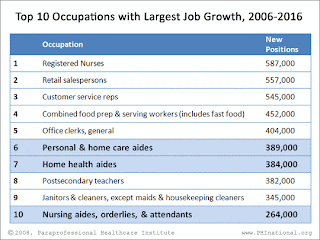We just returned from the annual
ALFA conference in Orlando, full of great contacts and new ideas.
One of the themes that carried through the entire session was the customer service theme - providing consist, "four-star" customer service. The "how-to" was essential: all three key note speakers presented something on this topic, ranging from the Starbucks Way of "Creating the Total Customer Experience" (Joseph Michelli) to Chip Bell's southern humor sharing how to get your customers so excited about your product or service that it consistently impacts your bottom line in a positive way.
The site for the conference, the Gaylord Palms, presented their customer service approach during one of the sessions. For them, it's all about their tag line: Consider it Done. In fact, when you call for assistance with just about anything, that's what you hear: "Consider it done." And it gets done.
During the session that the Gaylord Palms staff presented they emphasized one thing in making this happen: training. They train their "stars" consistently and thoroughly. They consider training, in fact, to be the most important step in everything they do. Trained staff make sure that the service is delivered consistently to every guest, every day.
Industry standards in hospitality run somewhat similar to those in senior care: about a 73% annual overall staff turnover.
Because of the
Gaylord Palms' emphasis on training, which trickles down to everything else they do, they've completely reversed the turnover. Their experience is over 70% RETENTION - not turnover.
That's a powerful, bottom-line testimony to the benefits that come when you commit to training. Committing to training is, after all, just one way that you show your ultimate commitment - to the people who labor hard, 24 hours a day, 7 days a week, to deliver your product or service to your clients.
Still a skeptic? Let me tell you a story: my husband, who attended the Palms' presentation, decided to test it. The microscopic screw that holds the arm onto his prescription sunglasses had fallen out that morning. He saved the screw, but had no tiny screwdriver to put it back together. After the presentation, he cornered the speaker to ask her if they had any tool that could help him. The answer? "Consider it done." Within a matter of minutes, the speaker returned to the room with a small travel toolkit, complete with a miniature screwdriver and magnifying glass. (Roger's favorite part of the story is that while the speaker was gone she left her associate there to keep him engaged in conversation, making the wait time seem to vanish.)
Of course, no story is complete without the other perspective. In the hotel where we stayed, the neighboring
Sheraton Vistana Resort, our king size bed was made up with a bottom sheet that tucked in only on one side. This just happens to be one of my travel pet peeves - sheets that don't adequately cover the mattress, and stay there, the entire night.
We contacted the customer service staff who said they'd take care of it. I thought, "Well that was simple - it'll be taken care of when we return for the night."
Unfortunately, that night we returned to an undisturbed room - the bed was identical to how we'd left it.
So I picked up the phone. I didn't really think this was a big thing - it should be fixed quickly. Not too worried about it. Three phone calls later I was thinking differently. No one was willing to address the problem. Each person - going three levels up the employee ladder - said the same thing: "We don't have fitted sheets here, I'm sorry. What is on your bed is the best we have."
No one offered to come see the problem, or to fix it in any way. At each stage I patiently explained that I was sure that the hotel had king size sheets; we simply needed one put on our bed.
After doing this three times, I decided that there was only one solution. I asked if someone could simply deliver to our room one flat king size sheet.
Within minutes, I had THREE sheets delivered (they really went the full mile there). I stripped the sheet off my bed, and remade it with the correct size sheet. (The one on the bed was, in fact, marked "Queen.")
This is the first time I've had to make my own bed in a big name hotel - and guess how many people I've already shared this experience with?
My husband has told just as many people about his Gaylord Palms experience, too - and frankly, for my money, I'd rather people were telling the Palms' story if it were my business!
So does training matter? You tell me...but let me tell you another story, if you're still not convinced!






